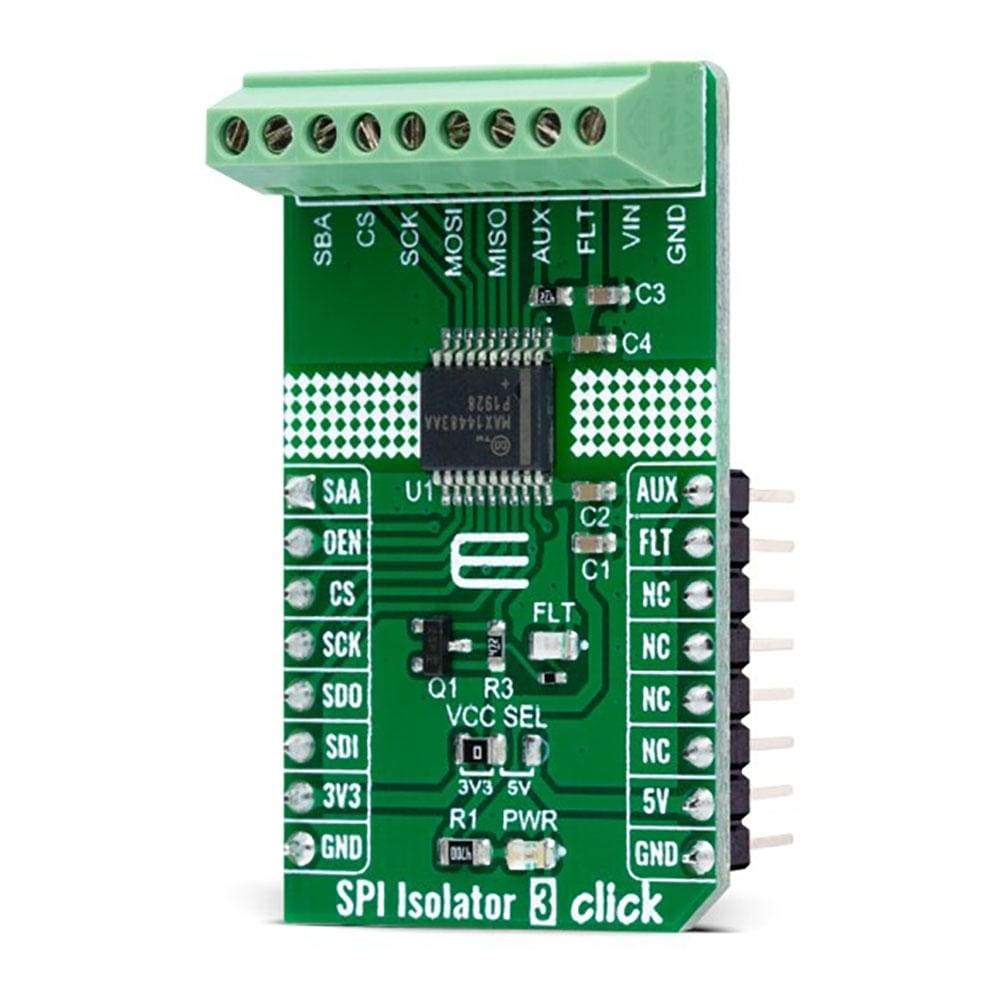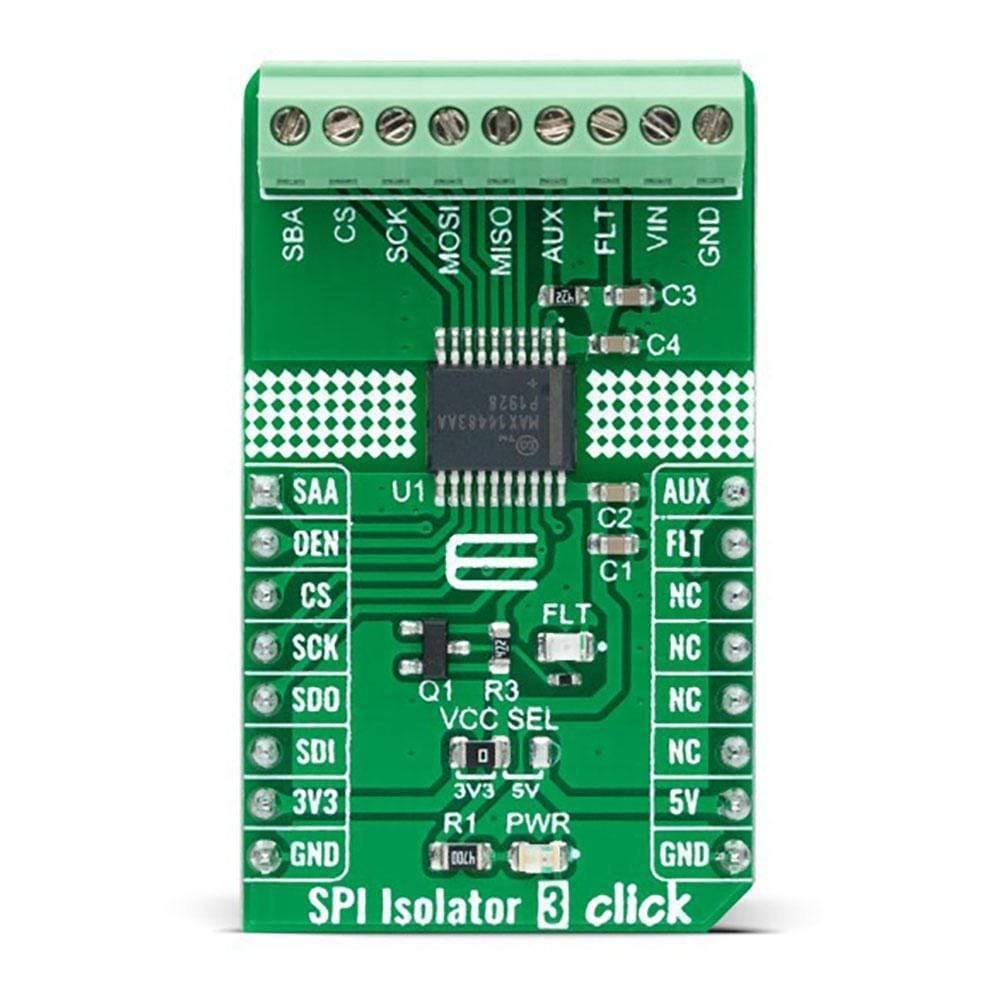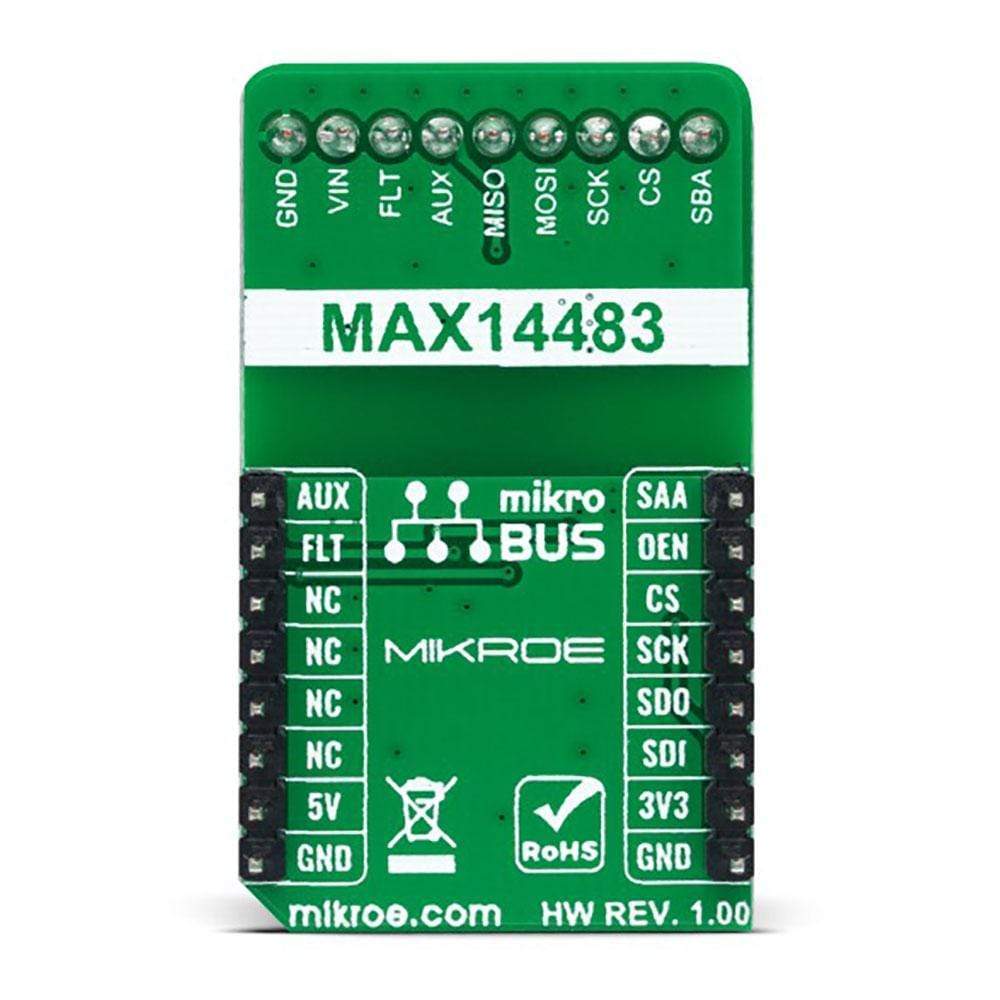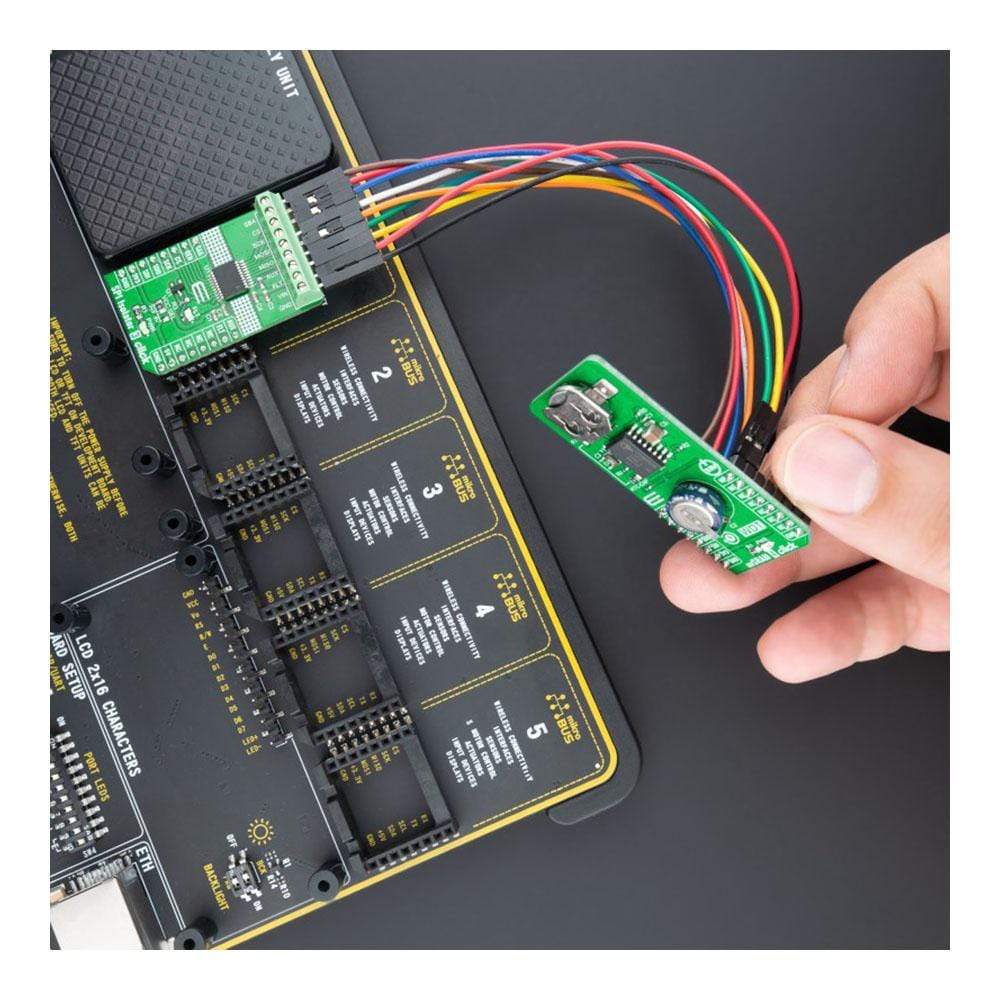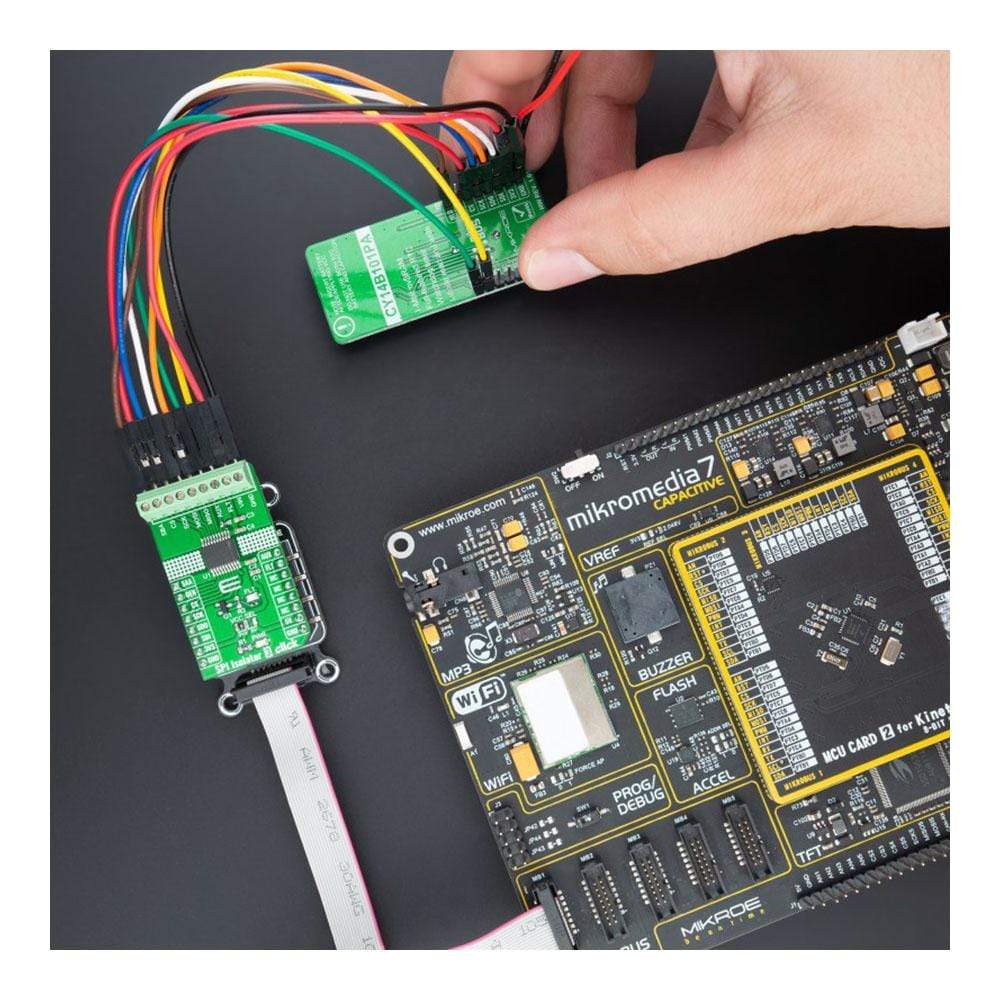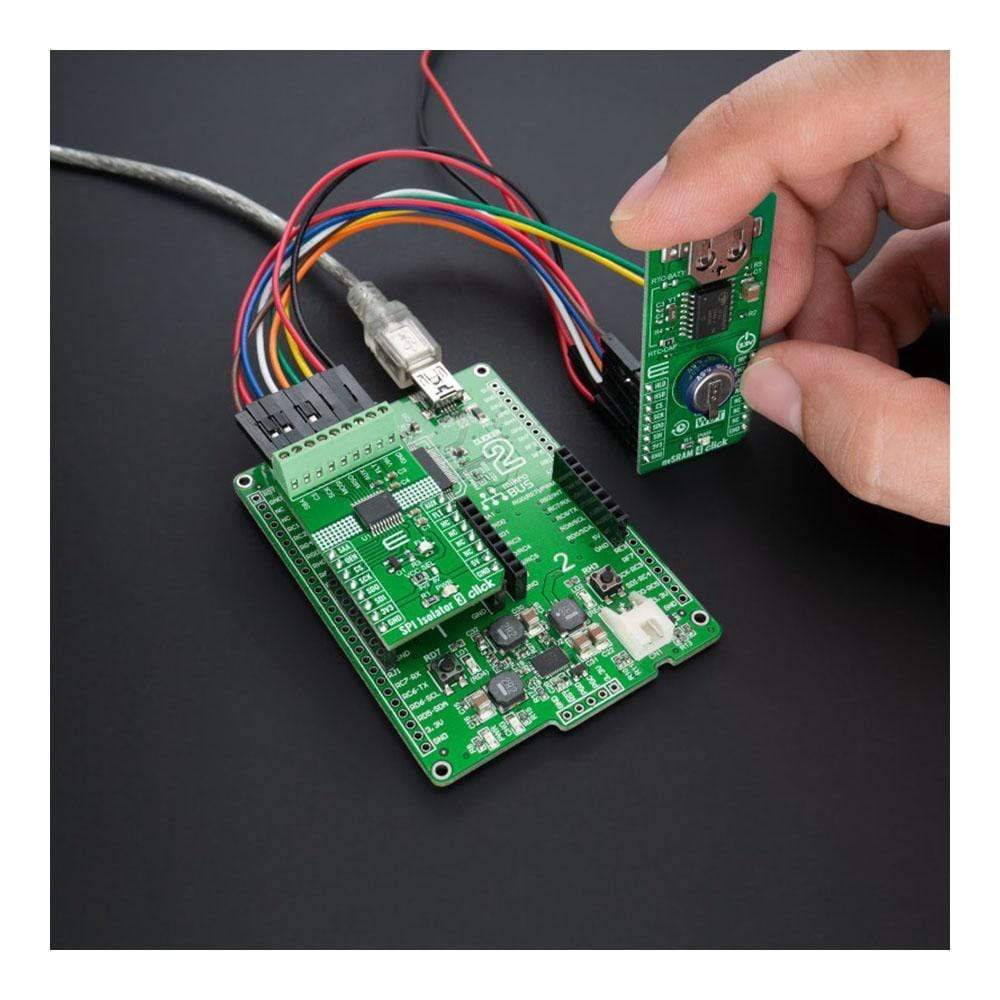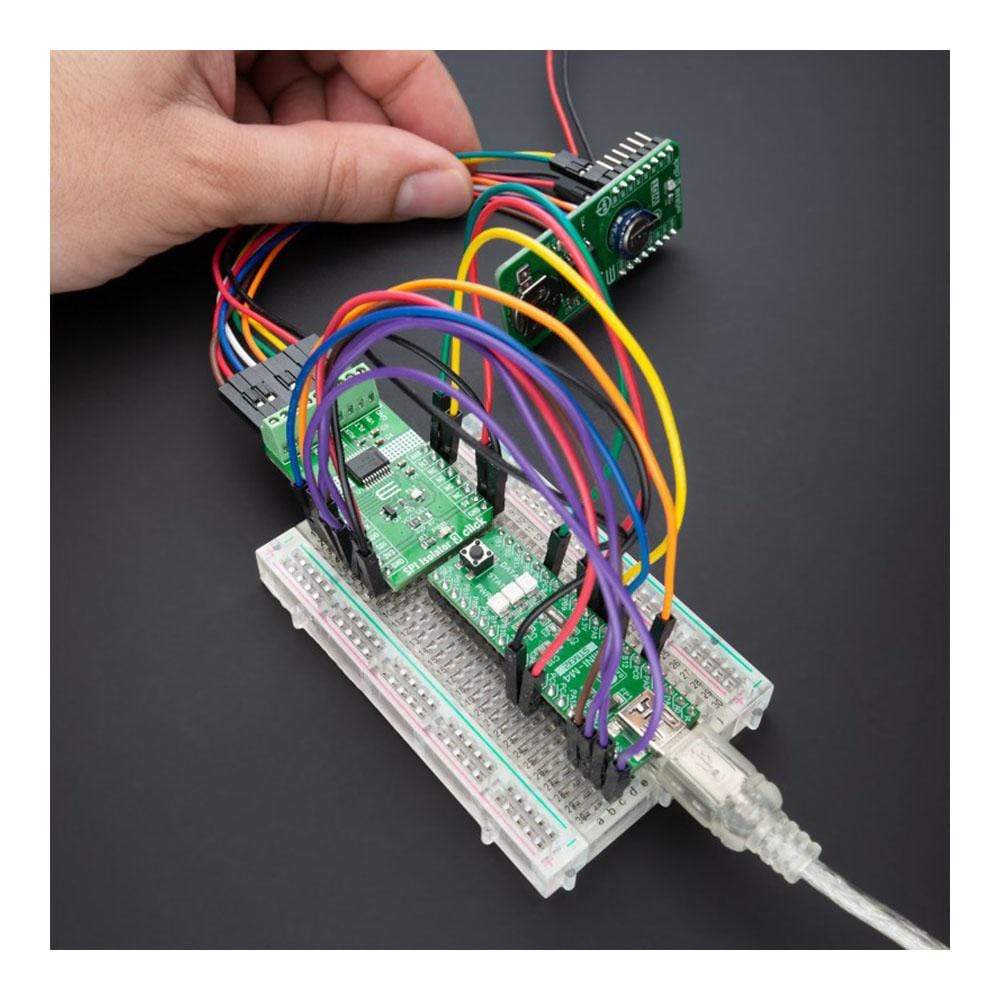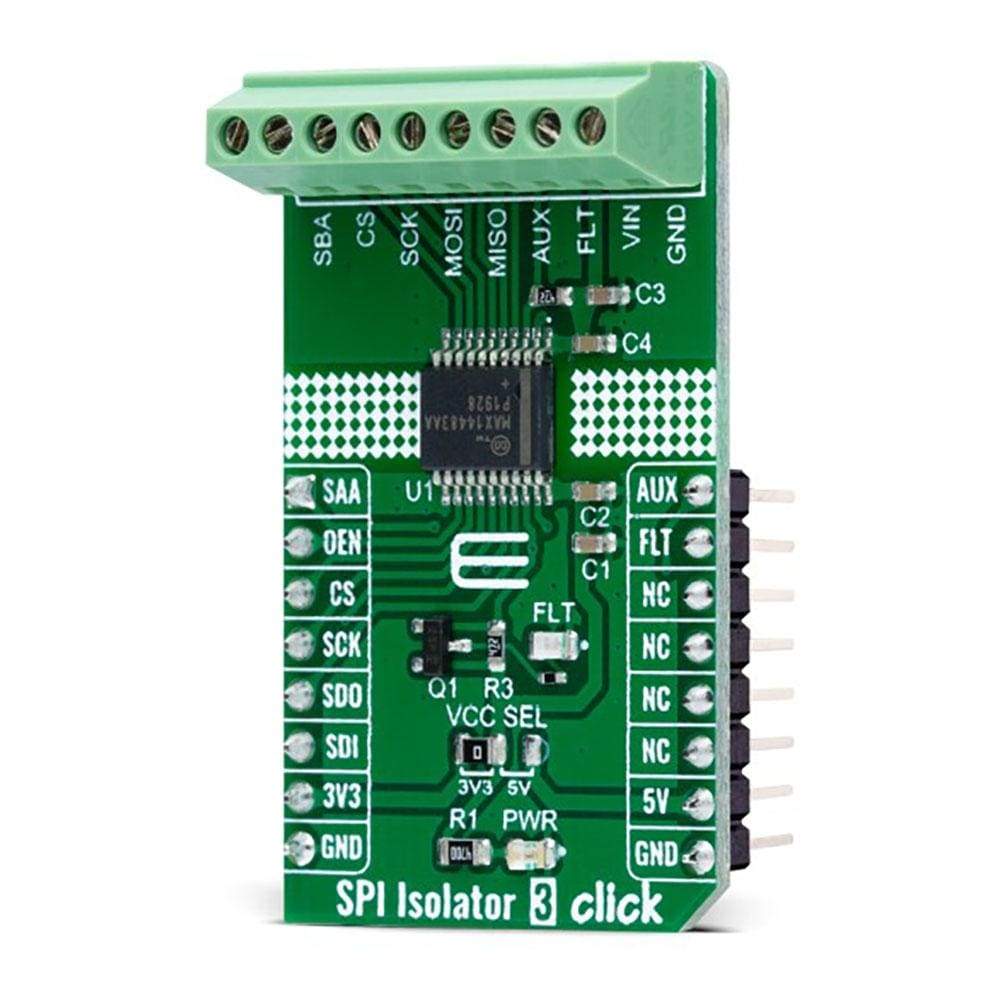
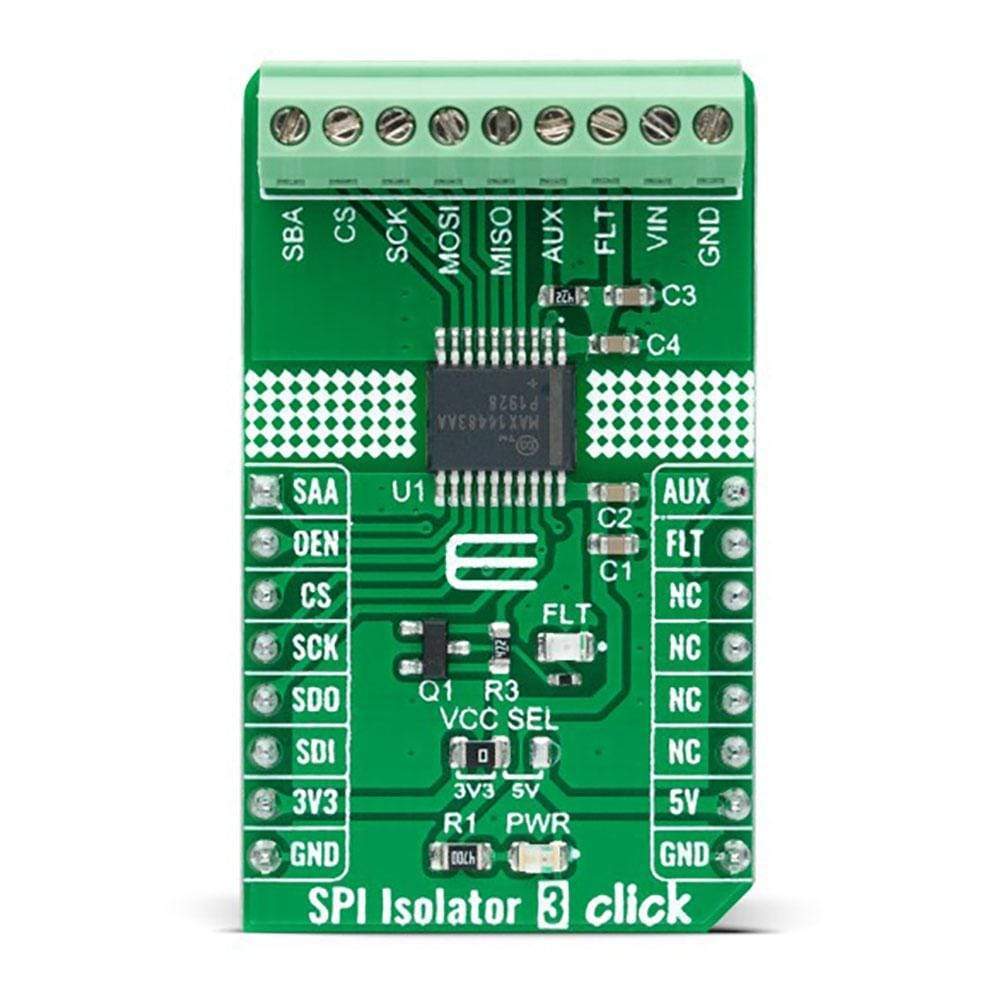
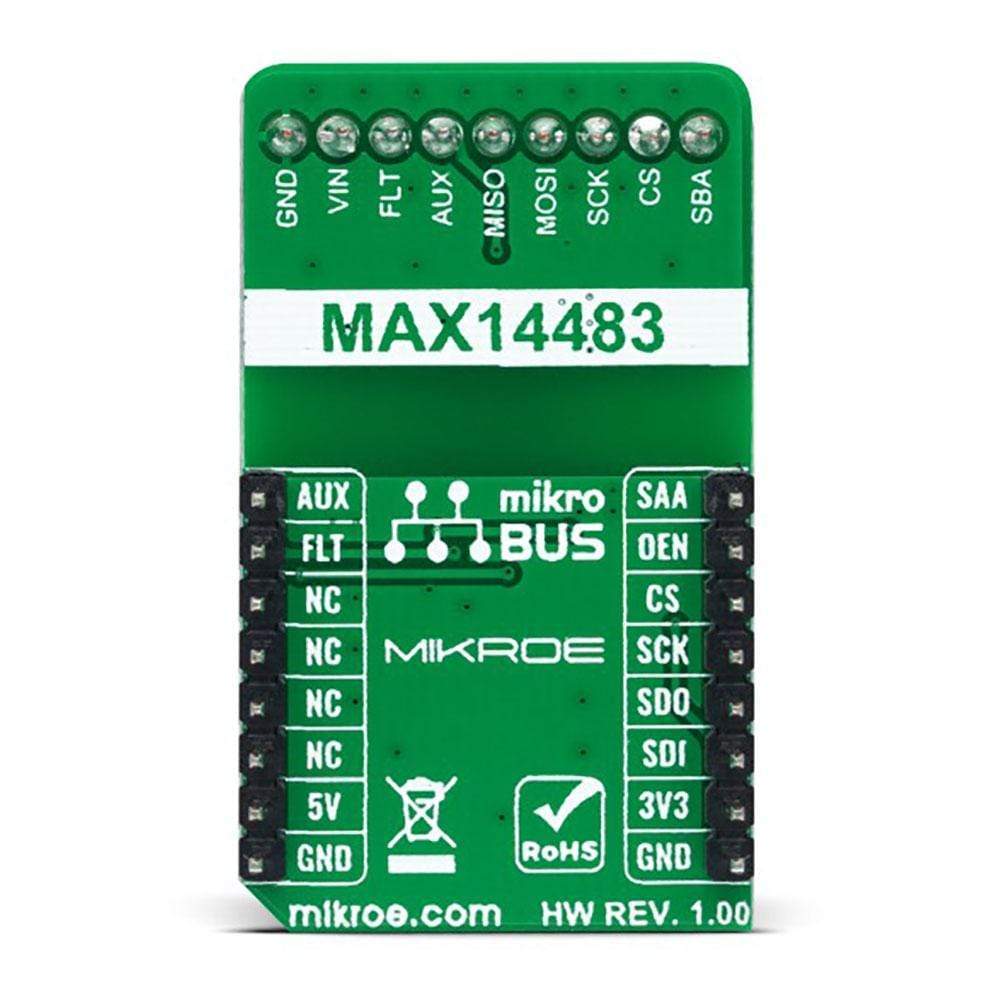
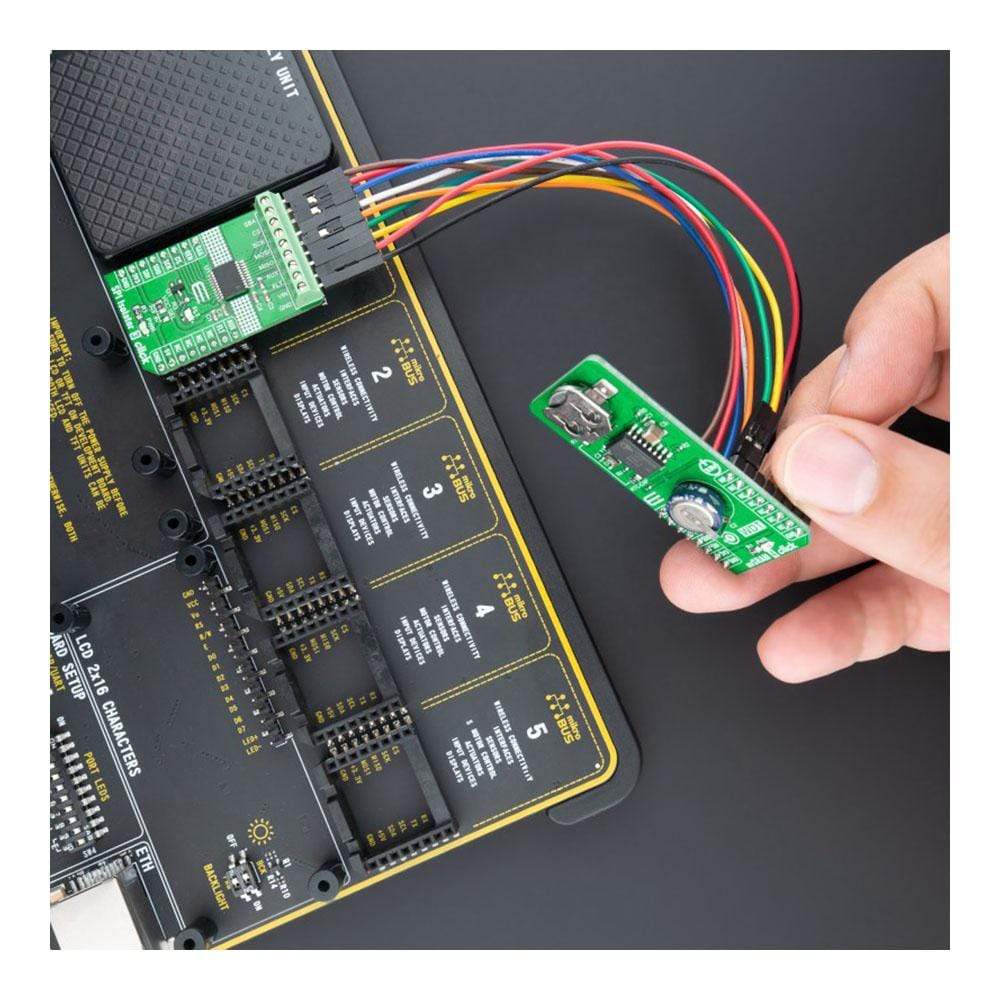
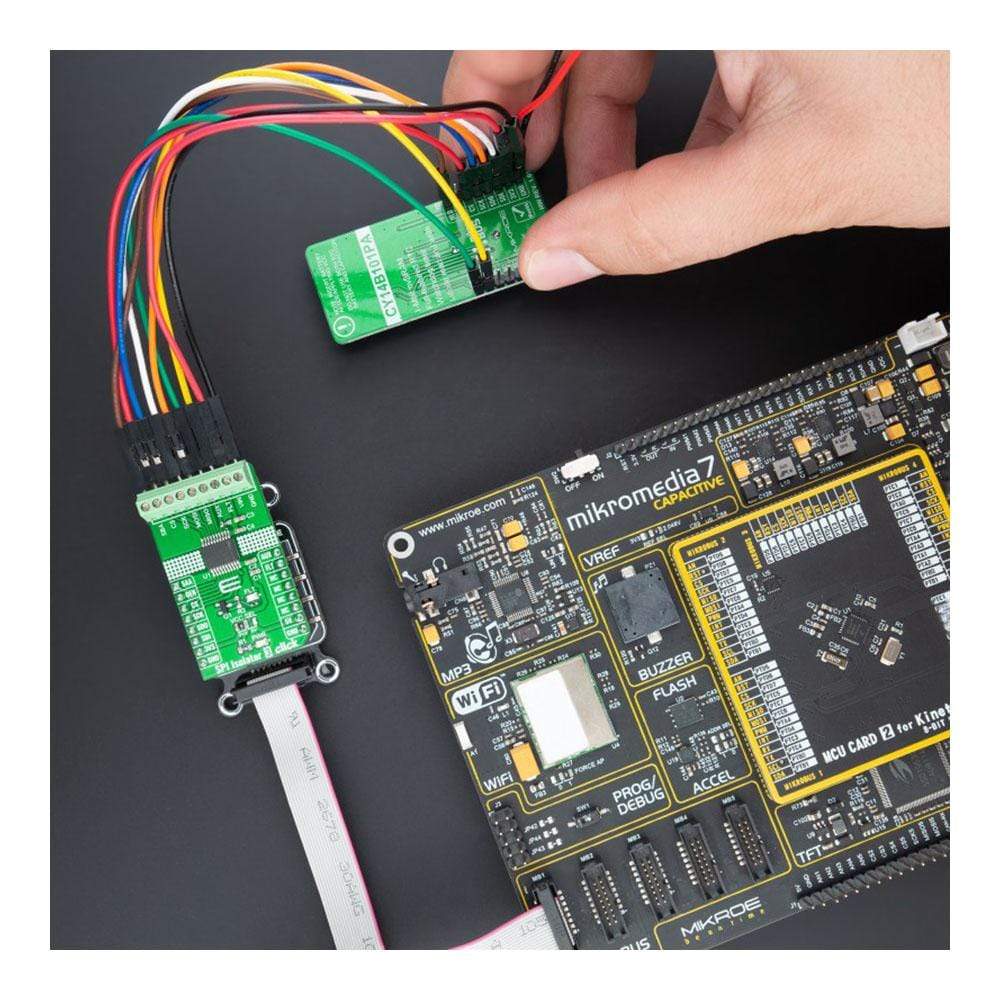
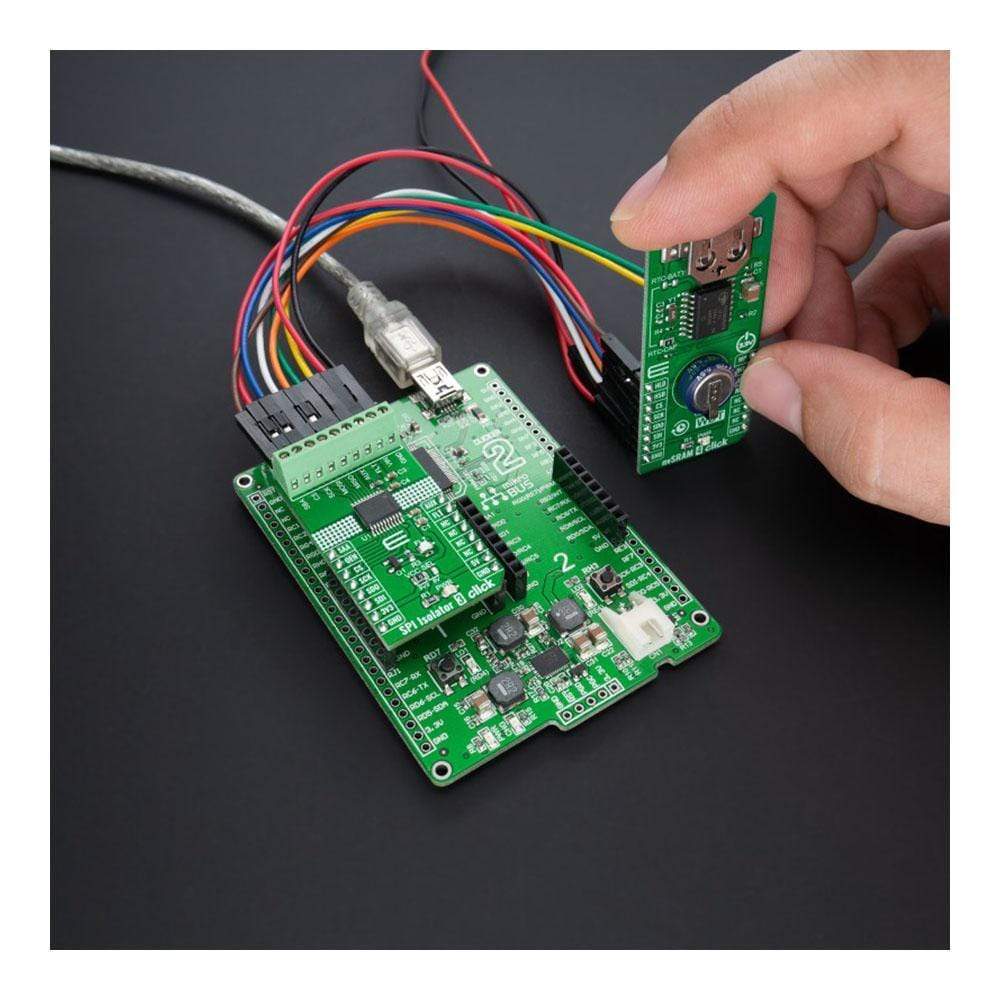
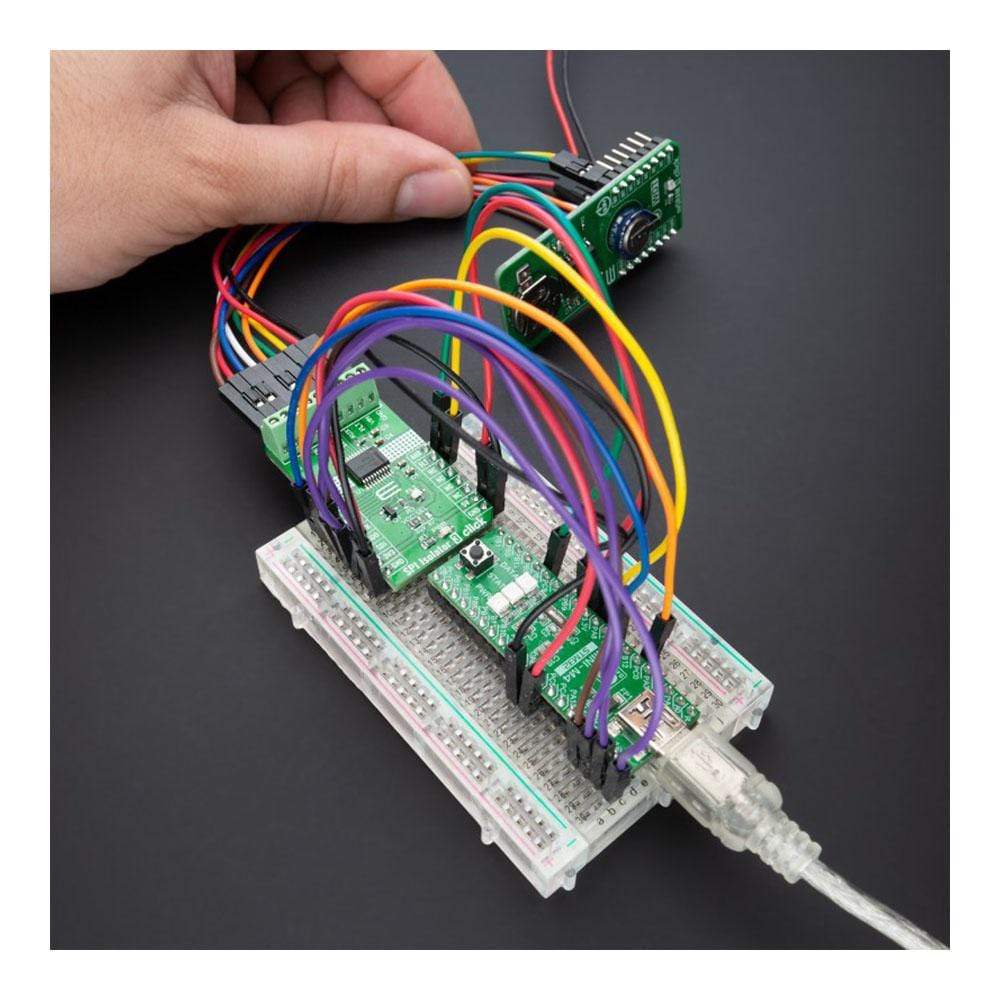
Overview
The SPI Isolator 3 Click Board™ is a compact add-on board that contains a digital isolator optimised for a serial peripheral interface. This board features the MAX14483, a 6-channel 3.75kVRMS digital galvanic isolator with a very low propagation delay on the SDI, SDO, and SCLK channels from Maxim Integrated. Besides a second enable control input, which allows MAX14483 to isolate multiple SPI devices, and an auxiliary channel available for passing timing or control signals from the master side to the slave side, the MAX14483 also possesses power monitors provided for both power domains to signal if the opposite side of the isolator is ready for operation.
Thus, the SPI Isolator 3 Click Board™ is suitable for general SPI-bus isolation and industrial, process, building automation, programmable logic controllers, and many more.
Downloads
La carte SPI Isolator 3 Click Board™ est une carte complémentaire compacte qui contient un isolateur numérique optimisé pour une interface périphérique série. Cette carte comprend le MAX14483, un isolateur galvanique numérique 6 canaux 3,75 kVRMS avec un très faible délai de propagation sur les canaux SDI, SDO et SCLK de Maxim Integrated. Outre une deuxième entrée de contrôle d'activation, qui permet au MAX14483 d'isoler plusieurs périphériques SPI, et un canal auxiliaire disponible pour transmettre des signaux de temporisation ou de contrôle du côté maître au côté esclave, le MAX14483 possède également des moniteurs de puissance fournis pour les deux domaines de puissance pour signaler si le côté opposé de l'isolateur est prêt à fonctionner.
Ainsi, le SPI Isolator 3 Click Board™ convient à l'isolation générale du bus SPI et aux contrôleurs logiques programmables industriels, de processus, d'automatisation des bâtiments et bien d'autres encore.
| General Information | |
|---|---|
Part Number (SKU) |
MIKROE-4651
|
Manufacturer |
|
| Physical and Mechanical | |
Weight |
0.02 kg
|
| Other | |
Country of Origin |
|
HS Code Customs Tariff code
|
|
EAN |
8606027382833
|
Warranty |
|
Frequently Asked Questions
Have a Question?
Be the first to ask a question about this.

